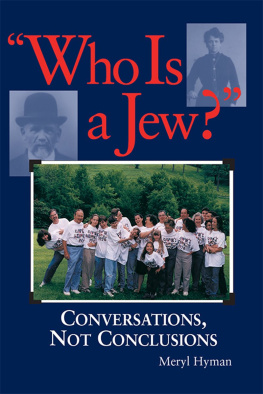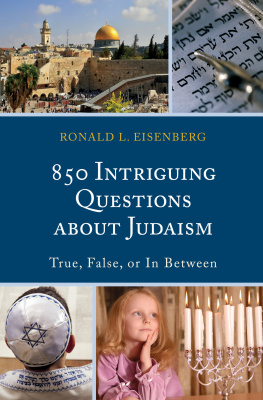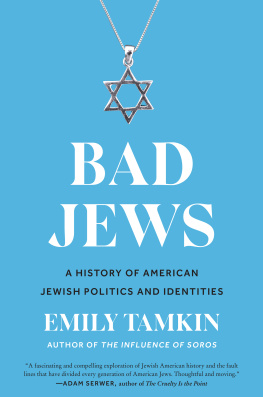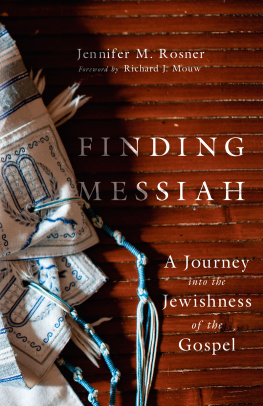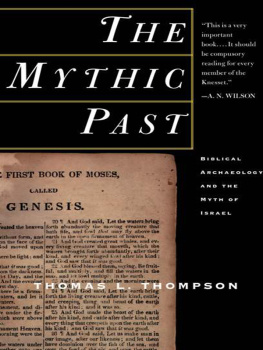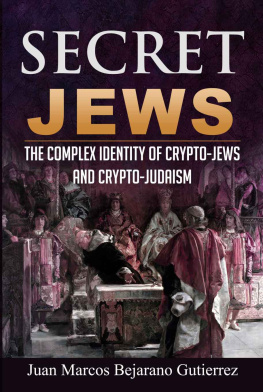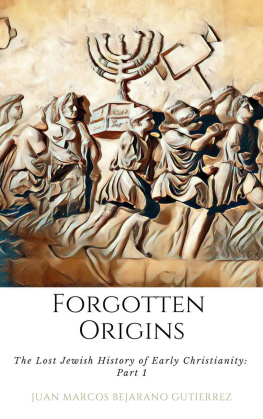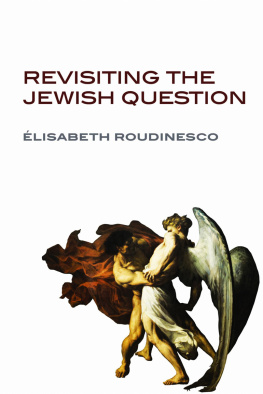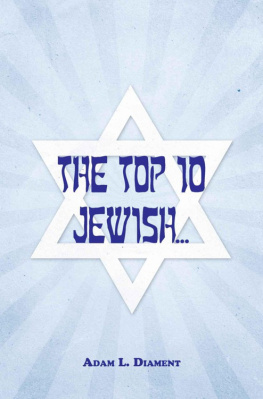WHO IS A JEW?
Conversations, Not Conclusions

Meryl Hyman
JEWISH LIGHTS PUBLISHING
Woodstock, Vermont
Who Is a Jew?: Conversations, Not Conclusions
2013 First Digital Edition
All rights reserved. No part of this book may be reproduced or transmitted in any form or by any means, electronic or mechanical, including photocopying, recording, or by any information storage and retrieval system, without permission in writing from the publisher.
Grateful acknowledgment is made for permission to reprint from the following works: S. Zalman Abramov, Perpetual Dilemma: Jewish Religion in the Jewish State, Cranbury, N.J.: Associated University Presses, Inc., 1976; Jacob Neusner, The Mishnah: A New Translation, New Haven, Conn.: Yale University Press, 1988; David Hartman, Conflicting Visions: Spiritual Possibilities of Modern Israel, New York: Schocken Books, 1990; Report of the Committee on Patrilineal Descent on the Status of Children of Mixed Marriages, New York:
Central Conference of American Rabbis, 1983.
Copyright 1998 by Meryl Hyman
Library of Congress Cataloging-in-Publication Data
Hyman, Meryl, 1950
Who is a Jew?: conversations, not conclusions / by Meryl Hyman.
p. cm.
ISBN 1-879045-76-1 (hc)
1. JewsIdentity. 2. JudaismEssence, genius, nature.
3. Judaism20th century. I. Title.
DS143.H96 1998
First Edition
10 9 8 7 6 5 4 3 2 1
Manufactured in the United States of America
Text design: Sans Serif, Inc.
Published by Jewish Lights Publishing
A Division of LongHill Partners, Inc.
Sunset Farm Offices, Route 4
P.O. Box 237
Woodstock, Vermont 05091
Tel: (802) 457-4000 Fax: (802) 457-4004
www.jewishlights.com
In memory of
LeRoy J. Hyman, M.D.
19161976
This book is for his family.
This book was blessed by many people whose enormous generosity will be apparent to the reader. To those in particular who overcame doubt that a book on this subject was possible, or even desirable, my great thanks. If it has even partially succeeded it is only because they took the time to help the reader understand the issues.
Others whose help was immeasurable are less obvious. Throughout the world are a legion of, mostly, women, identified as secretaries and assistants who keep the great institutions (and their leaders) running. Invariably, they make themselves known only by first names, and only when asked. To all of themIris, Irit, Dot, Malka, Jean, and many moremy thanks and admiration. So too my thanks to extraordinary people who devote themselves to the care and use of Jewish libraries, among them Henry Metzger and Roy Segal.
I am blessed with intelligent and caring family, friends, and mentors whose belief in this book and time-consuming help played as great a part in its accomplishment as anything I did.
My thanks and love to Amy Hyman, who, when she married my brother, did not know she was also marrying this book, which would not have happened without her transcriptions, research, commentary, advice, and enthusiasm.
And to Moshe Samet, whose research and discussions on the Who Is a Jew? issue gave me a place to start.
Thanks for their help and guidance to Dr. William and Gloria Lewit, Rabbi David Ellenson, Diana Marshall Weissberg, Rabbi Louis Jacobs, Rabbi Lionel Blue, Shoshana Cardin, Rabbi Amy Klein, Rabbi Shaul Feinberg, Marilyn Henry, Debra Nussbaum Cohen, Ira Rifkin, Anat Ben-Dor, Sasha Treuherz, Victor Gelb, Manfred Moses, Mark Michaels, Karen R. Klestzick, Susan and Augie Hasho, Davie Hyman, Seymour Feldman, Bette Greenfield, Daniel and Wendy Greenfield, Nancy Q. Keefe, Mary Carr, Jonathan E. Freeman, Kim Kavin, Louise Tutelian Morgenstern, Jean Patman, Elemir Horvath, and Janet and Loring Pratt. And to my mother, Betty Fisher Grundies, who lovingly answered my questions and supported me in this quest though it renewed sometimes painful memories.
My thanks to Gary Sherlock, Robert W. Ritter, Kenneth Paulson, Laurie Thomas, Bill Madden, Jeff Walsh, and all the staff, managers, and executives of Gannett Newspapers who extended themselves to give me time for this book.
At Jewish Lights, special thanks to Antoinette Matlins, Arthur J. Magida, and Sandra Korinchak.
When I mentioned to Stuart Matlins, the publisher of Jewish Lights, that I was thinking about writing a work of fiction on the subject of Who Is a Jew?, he said, Its too important to be a novel. May all writers know the pleasure of working with a publisher whose first goal is to change the world.
Some may take issue with all or part of this book. Such complaints should be directed to me. The persons who helped with this book are in no way to blame for its shortcomings.

Jews live throughout the world. I chose to look at this question intensely in three places: Israel for obvious reasons; the United States because it contains the greatest number of Jews and because I am American with a particularly American identity problem; and England because, while its Jewish population is small, it is a highly visible minority in an overwhelmingly Christian society.
A note about the conversations:
I do not speak Hebrew. Fortunately for me, and for the reader, educated Israelis speak wonderfully colorful English, generally with American accents and idioms, and Hebrew-Israeli inflections and cadences.
Almost everyone included in this book was interviewed in person, with few exceptions. Because these were conversations rather than straight question-and-answer interviews, I deleted most of my own statements and queries except in those cases where clarification was necessary or the conversation veered suddenly. I have edited the conversation transcripts for length. I showed transcripts to Rabbis Bulman, Sacks, and Lamm as they requested. I strove to represent fairly and accurately the many generous people in Israel, Europe, and the U.S. who took time to educate me, and to let me see the humanity and passion at the heart of their difficult responsibilities.
Israel: Nobody belongs here more than you.
Motto of the Israeli Tourist Board
IT IS FRIDAY in Jerusalem. On Ben Yehuda Street, American, English, French, Japanese, German, and Russian tourists wear ineffective windbreakers. They are surprised by the cold. The Israelis are prepared for a bitter Jerusalem winter, even so late in March when history tells them the high sun will heat the hills. Civilians and soldiers are wrapped in wool, their baby strollers are battened in plastic. Arms filled with flowers, they set their courses and unremittingly stride, refusing to give way on the sidewalk, their handbags and Uzis colliding as they rush to beat the dark.
Sabbath, which in Hebrew is Shabbat, does not begin until sundown, but by four oclock, with three hours of light left, most storefronts are gated. The ultra-Orthodox Jews, in their long black Old World coats and big hats, set up booths on the streets and stop men in modern dress to offer phylacteries, black boxes containing four biblical passages bound with leather straps to the left arm and the head during prayer. They take their leave before the sky grows dark. A shrieking siren calls Jews to begin Shabbat observancesthe same siren used in war. Five times each day the Muslims are electronically called to prayer from the citys minarets. The Jews are called just once a week, on Friday.
The country that broke the rules has lots of its own. At the Lev Yerushalayim Days Inn hotel, a chicken meal, cooked before sundown, is served to the ultra-Orthodox travelers who pray standing at their tables, then wash their hands at the sink in the center of the dining room before breaking bread for the Sabbath. I feel a little silly among them, and sillier still after dinner when, impatient for the elevator door to close, I stab at the buttons. A young Chasidic woman in a beautiful long brown suit, her hair covered by a fashionable hat and snood, speaks to me in English. This is the Shabbat elevator, she says. It goes by itself. It is set to automatically stop, open, and close on each floor so that no one need ignite a spark of electricity, which would break the Sabbath injunction against lighting a fire.
Next page
